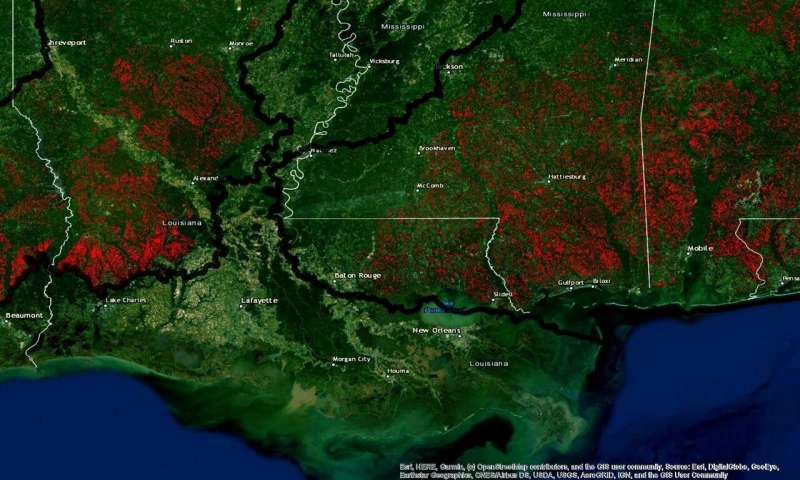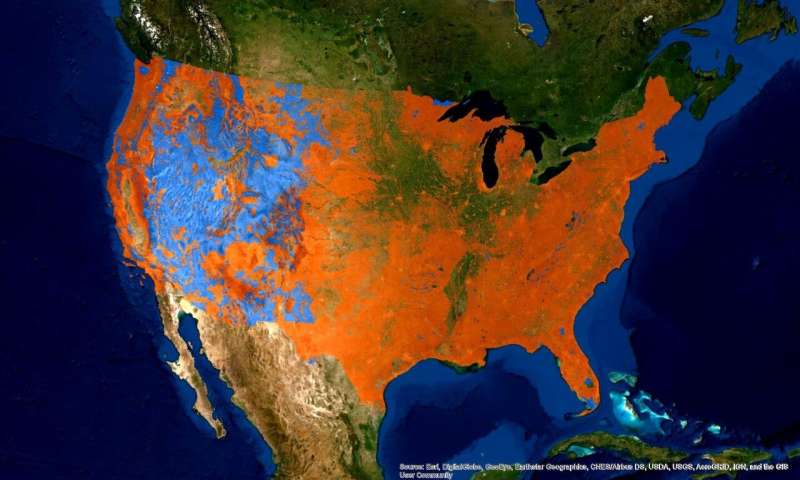Fallowing cattle-feed farmland simplest way to alleviate western water shortage
DURING AND AFTER THE GREAT DEPRESSION AND DUSTBOWL IN THE PRAIRIES
FALLOWING WAS COMMON PRACTICE UNTIL THE SEVENTIES THEN IT BEGAN ITS DECLINE

All over the world, the rate at which humans consume fresh water is now approaching or surpassing the rate at which water sources are being naturally replenished, creating water shortages for people and ecosystems. In the western US, water shortages are becoming more frequent and more severe, and are putting many species of fish inhabiting western rivers at risk—but the scarcity of water is also risking the growth of cities in the region like Los Angeles and Phoenix.
An important new study published this week in Nature Sustainability finds that irrigated crop production accounts for 86 percent of all water consumed in the western US—and of all the water used on western farms, by far the largest portion goes to cattle-feed crops such as alfalfa and grass hay. To alleviate the severe shortage of water in the region—especially in the Colorado River basin—the study's authors suggest that rotational fallowing farmland, leaving the land uncultivated for a period of time, could be a simple and affordable means of dramatically reducing water use in the region.
Study co-author and principal investigator Ben Ruddell, who is also director of NAU's School of Informatics, Computing, and Cyber Systems, leads the FEWSION project, a multi-institutional team effort launched in 2016 and funded through the National Science Foundation (NSF), to assess the nation's food, energy and water systems. The broader FEWSION research team contributed the data-intensive maps it has produced of these coupled human-natural systems. NAU assistant research professor Richard Rushforth, the lead data scientist on FEWSION, also co-authored the study.
Beef and dairy production depleting water supply
The study set out to assess river flow depletion across the US, identify the factors driving this depletion and evaluate options to reduce vulnerability to water shortages. The researchers estimate that two-thirds of the cattle feed being irrigated from western US rivers ends up as beef products, with the remainder going to dairy products.
"The groundbreaking maps produced by FEWSION made it possible to link river depletion through the supply chain to irrigated alfalfa and hay and to beef and dairy production, then to urban consumers of beef and dairy in each city and county in the US," Ruddell said.
According to the study, the team's findings "led to closer examination of the water use and ecological impacts associated with irrigation of cattle-feed crops. We pinpointed locations where these crops were being grown and modelled their associated depletion of river flow in local sub-watersheds. We then conducted an international supply-chain analysis to identify the locations where cattle-feed crops are transported and where the resulting beef products are consumed, thereby specifically linking end consumers of beef to effects on rivers. We subsequently explored the benefits and consequences of reduced feed-crop production and beef consumption through the lenses of water security, river ecosystem health, food security and agricultural economies."
"We're using a lot of water to grow the cows that are the source of our burgers, steaks and milk," Ruddell points out. "In the Colorado River basin, that cattle feed water use is nearly three times greater than all the water used for urban, industrial and electrical power purposes combined."
Along with the study's lead author and FEWSION contributor Brian Richter, Ruddell was surprised by some of their findings.
"I can hardly believe that such a large fraction of our western water problems are linked to irrigation of cattle feed, or that such a large fraction of our western water problems could be fixed with a single prescription—fallowing. It's rare that science clearly finds a 'silver bullet' that solves such a big problem so well, and so affordably," Ruddell said.
"Although the idea for this study of the US food energy and water system was proposed as part of the FEWSION project," he noted, "the roots of the ideas go back decades and involve many of the pioneers of river science and environmental sustainability—including Brian Richter, who is one of the founders of the science of river management for environmental flows. It takes a long time, generous research funding, and a broad team with diverse interdisciplinary skills for synthetic ideas like this to become a reality."
Water security will depend on collaboration, choice, policy
Scientists from 12 universities worldwide collaborated on the study, including Columbia University, Baylor University, the National University of Singapore, Nanjing Audit University and the University of Twente.
Ultimately, they conclude, "Water security and river health in the western US will depend on the willingness of urban and rural water users to collaborate in design of demand-management strategies, the ability of political leaders to secure funding to implement those strategies and the willingness of beef and dairy consumers to reduce their consumption or select products that do not depend on irrigated cattle-feed crops.
"My favorite food is cheeseburgers!" Ruddell admitted. "Individual choice, in addition to collective politics and policy, are important here. We need to be willing to pay a little more for more sustainable beef and dairy products, and we must strongly support politicians and policies that are willing to invest in solutions to the western water problem—including infrastructure, environmental flows and smart economic solutions like fallowing. Act with your votes and with your dollars. This is a problem we can afford to solve!"
More information: Richter, B.D., Bartak, D., Caldwell, P. et al. Water scarcity and fish imperilment driven by beef production. Nat Sustain (2020). DOI: 10.1038/s41893-020-0483-z , https://doi.org/10.1038/s41893-020-0483-z











